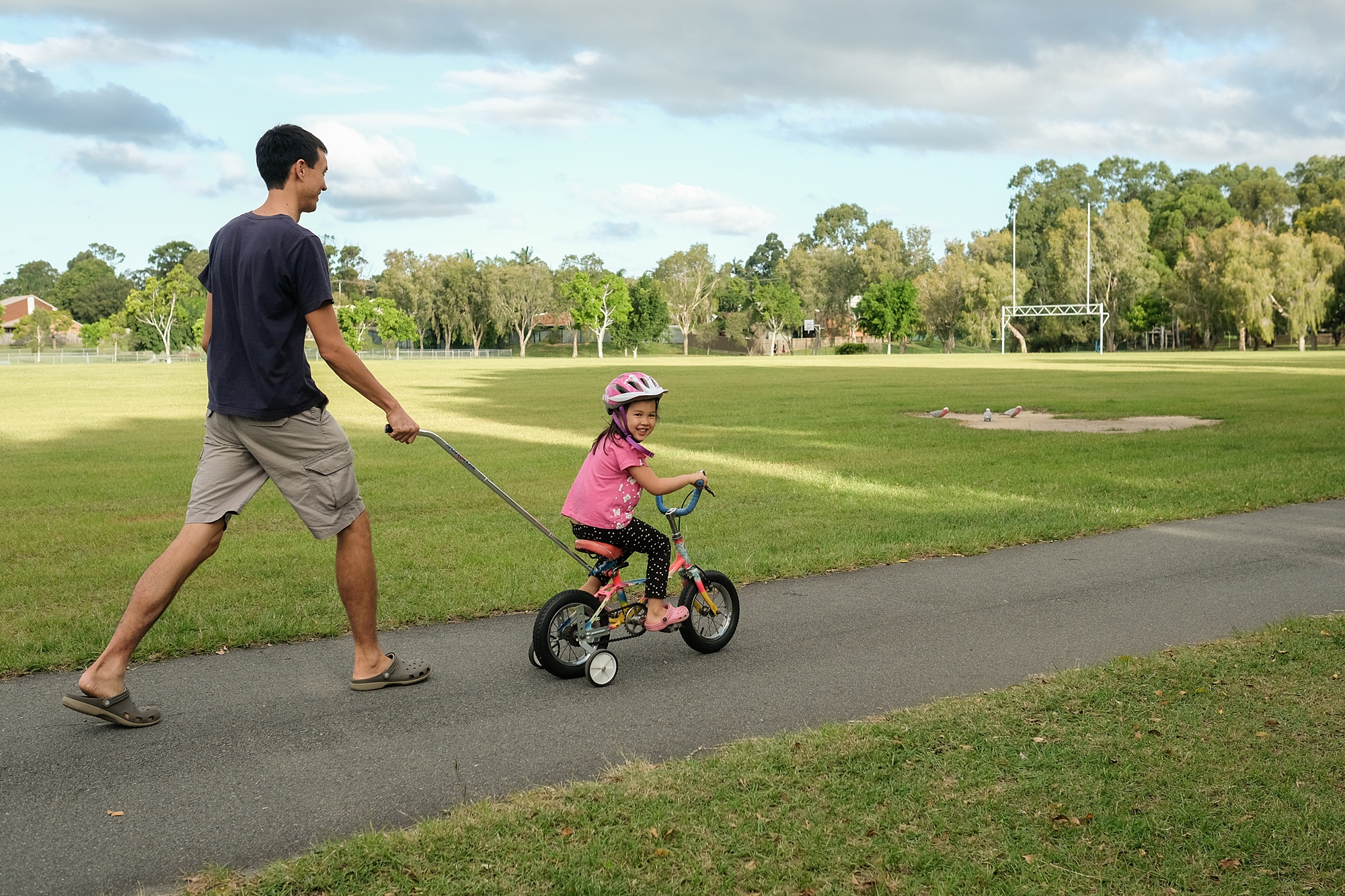子どもが自転車に乗る練習を始めるとき、私たち大人は「補助輪」や「後ろから支える」などの方法でサポートをすることが多いでしょう。しかし、子どもは一方で、自由にペダルを漕いでみたい、ぐらつきながらも自分だけで進んでみたいという気持ちも同時に持っています。この「補助」と「自由」という、一見相反するものを同時に求める姿は、自転車の練習だけに留まりません。実は子どもが成長していく過程のあらゆる場面で、大きな意味を持っているのです。
本記事では、自転車練習のエピソードを入り口にして、「子育てに必要な補助と自由のバランス」について考えてみます。子どもが望む2つの要素を上手に取り入れることで、成長を促しつつ、子どもの自己肯定感や自主性を育む方法を探ってみましょう。
1. 自転車練習が象徴する「補助と自由」の両立
- 子どもは安心感を求める
小さな頃に補助輪を外したばかりの子どもにとって、自転車に乗ることは大きな冒険です。転んでケガをするかもしれない、上手くバランスが取れないかもしれないという不安があるので、最初は大人が後ろを支えてくれることに安心感を覚えます。 - 同時に、自分だけで進む達成感も求める
「一人で乗ってみたい」「もう補助輪は要らないかも!」といった気持ちが芽生える瞬間もあります。子どもは大人に支えてもらいながらも、どこかで「自分だけでやりたい」という強い好奇心とチャレンジ精神を持っているのです。
2. 補助=親のサポートとは何か
- 安心の土台を築く
自転車の練習で後ろから支えてあげるように、子どもが不安を感じているときにはそっと手を差し伸べ、転ばないようにフォローするのが「補助」のイメージです。子どもが挑戦する際の“安全ネット”になってあげることで、失敗を恐れずにチャレンジできる環境が整います。 - 限度を見極める大人の目
ただし、いつまでも手放さずに支えていると、子どもは自分だけで進む機会を失ってしまいます。補助の力加減を上手にコントロールすることが重要。子どもが「もう少し支えていてほしい」と望むときにはしっかりサポートし、いざ「一人で大丈夫そう」というタイミングになれば、そっと手を離してあげるという柔軟さが求められます。
3. 自由=子どもの自主性とは何か
- 自分で考え、行動する力
“自由”と聞くと放任主義をイメージするかもしれませんが、ここで言う自由とは「子どもが自分で考え、選択し、行動できる余地」を与えることを指します。自転車をこぐペダルの回し方やハンドルの切り方など、自分で試行錯誤する過程が大切なのです。 - 成功と失敗を体験する場
大人が常に指示やアドバイスを与えてしまうと、子どもが自力で試行錯誤する機会が奪われます。自由な環境でチャレンジし、上手くいかずに転んだり、その中でどうすればいいかを自分なりに考えたりする経験こそが、子どもの成長を大きく押し上げるのです。
4. 「補助」と「自由」が両方必要な理由
- 安心感と冒険心のバランス
子どもは未知の世界に挑戦するとき、「失敗しても大丈夫」という安心感があるからこそ、思い切り試せます。同時に、完全に守られた状態では冒険が不足してしまうため、自由に動き回って自分の限界を確かめたい気持ちも高まるのです。 - 「やればできた!」という成功体験
補助があることで転倒や大きな失敗を防ぎながら、最終的には自分でやり切る体験ができるのがベスト。大人の手を離してもらって上手く自転車に乗れた瞬間の「やればできた!」という成功感は、子どもの自己肯定感を大きく育てます。
5. 子育て全般に通じる「補助と自由」の考え方
- 学習面でも同じ構造
勉強を教えるときにも、最初はヒントや手助けを与えつつ、徐々に子どもが自分だけで解けるように導くのが理想です。最初から全てを教え込むのではなく、適度に子どもの試行錯誤を許容し、間違いをフォローする補助が大切。 - 家庭内のルール設定も同様
家でのルールややってほしいこと(例:お手伝い、整理整頓など)を設定するときも、「自由にさせすぎて何をやっていいかわからない状態」と「がんじがらめに管理してしまう状態」の中間を見つけることが重要です。一定のガイドラインを示しつつも、子どもが自分から動く余地を残すアプローチが有効でしょう。
6. 子どものペースに合わせるためのヒント
- コミュニケーションを密にする
子どもが「もう少し支えてほしい」のか「一人でやりたい」のかは、日々変化します。言語化できる年齢なら直接確認するのはもちろん、まだ言葉が上手く使えない場合は表情や行動から「今は支えてほしいんだな」「そっと見守ってほしいんだな」というサインを読み取るようにしましょう。 - 失敗や転倒を恐れすぎない
自転車練習のように、多少の転倒や小さなケガは付きものです。子育ても同様で、失敗やエラーは成長の一部。大人が失敗を過剰に恐れて子どもの挑戦を制限してしまうと、子どもが自由を得られる機会が減ってしまいます。
7. 親としての心の持ちよう
- 手を離す勇気と、必要なときに支える覚悟
子どもが自力でやりたがるとき、「失敗したらどうしよう」という不安は誰にでもあります。しかし、そこで子どもの意志を尊重してあげることが、本人の自主性や自信を育てる鍵です。一方で、本当に困ったときにはすぐに駆け寄って支えられるよう、いつでもスタンバイしておく心構えも必要です。 - 結果よりプロセスを重視する
自転車に乗れるようになることがゴールだとしても、そこに至るまでの試行錯誤や失敗が、子どもにとっては何よりの学びの場です。「上手に乗れたか」だけでなく、「どんな過程を経て乗れるようになったのか」を大切に見守ることで、子どもの自己成長力を伸ばせます。
8. 「補助と自由」を上手に取り入れるための具体策
- 段階的アプローチ
自転車練習でいうと、はじめは後ろをしっかり支え、タイミングを見計らって離してみる。少し走れたら褒める。転んだら一緒に立ち上がって「もう一回やってみよう」と声をかける。この流れを何度か繰り返すことで、子どもは徐々に自分だけでも進めるようになります。 - 子どもに選択肢を与える
「今日は補助輪ありでやる?それとも無しにしてみる?」というように、選択肢を与えることで子どもが自ら考えられるようにするのも方法の一つ。勉強や家事の手伝いでも「どの課題からやる?」「どの役割を担当する?」と選ばせることで、自由度を高めつつ補助も行えます。 - 誉め方にも工夫を
「できたね、すごいね」という結果に対する誉め言葉だけでなく、「さっきよりバランスがうまくとれてきたね」「ハンドルさばきが安定してきたよ」といったプロセスに目を向けたフィードバックを意識すると、子どもの成長意欲が高まりやすくなります。
まとめ
自転車の練習には、「補助してほしい」「でも自分だけで漕ぎたい」という2つのニーズが同時に存在します。この一見矛盾したニーズは、実は子育て全般において非常に重要なテーマです。子どもは「安全に守られている安心感」と「自由に挑戦する冒険心」の両方を求めているのです。
- 補助=親がそっと支え、安全ネットを用意する
- 自由=子どもが自分で考え、試行錯誤できる余地を与える
この2つを上手にバランスさせることで、子どもは失敗を恐れずにチャレンジし、成功体験を重ねることで自信や主体性を育むことができます。自転車練習での「補助輪を外すタイミング」のように、子育てでも「いつ手を貸し、いつ見守るか」を見極めるのは難しいものですが、その試行錯誤こそが親子の成長の源泉でもあります。
子どもの笑顔を見ながら、子どもが「もう大丈夫!」と言ったその瞬間に、そっと手を離す勇気。もし転んでしまっても、「また一緒に立ち上がろう」と支えてあげる温かさ。この両立が、子どもの健やかな成長を支える大きな鍵になるのではないでしょうか。
“Balancing Support and Freedom: Lessons from a Child’s Bike Practice for Effective Parenting”
When a child first learns to ride a bike, adults often provide support—like training wheels or holding the bike from behind. However, children also simultaneously crave the freedom to pedal on their own, to wobble and see if they can move forward by themselves. This simultaneous desire for “support” and “freedom” doesn’t just apply to bike riding; it’s essential throughout a child’s growth.
In this article, we’ll use the bike-riding scenario as an entry point to discuss why both support and freedom are critical in parenting. By finding ways to incorporate these two seemingly contradictory elements, you can foster your child’s growth, self-esteem, and independence.
1. How Bike Practice Symbolizes the Need for Both “Support” and “Freedom”
- Children Seek a Sense of Security
For a child who has just taken off the training wheels, riding a bike can be a big adventure. There’s a real fear of falling or failing to balance, so having an adult hold the seat from behind offers a comforting safety net. - Yet They Also Want to Progress on Their Own
At the same time, kids often feel a strong urge to do it by themselves. Even while benefiting from adult support, children harbor curiosity and determination to pedal forward under their own power.
2. What Does “Support” (Parental Assistance) Mean?
- Building a Foundation of Safety
Much like holding the back of the bike, “support” means offering help when your child feels insecure. By being a “safety net,” you give them a chance to challenge themselves without fearing major failures. - Knowing When to Let Go
However, if you never release your hold, the child misses the chance to move independently. A parent’s key role is to gauge the right time: Provide solid help when they need it, then let go the moment they seem ready to try alone.
3. What Does “Freedom” (Child’s Autonomy) Mean?
- The Ability to Think and Act Independently
“Freedom” here doesn’t mean neglect; it means giving your child space to think, choose, and act on their own. In bike riding, for instance, it’s about figuring out how to pedal and steer. - A Place to Experience Success and Failure
Constant parental directions can rob a child of trial-and-error opportunities. The chance to fail, reflect, and try again is crucial for their development.
4. Why Both “Support” and “Freedom” Are Essential
- Balancing Security with Adventure
When trying new things, children need to sense, “I’m safe even if I fail.” At the same time, if they feel overprotected, they lose the adventurous spark needed to explore their own limits. - The “I Did It!” Moment
Having just enough help to prevent serious accidents and eventually riding solo is ideal. The moment they succeed without your direct support instills a powerful “I can do it!” feeling, boosting their self-confidence.
5. How “Support” and “Freedom” Apply to All Aspects of Parenting
- Academic Learning Follows the Same Structure
When teaching children academically, offer hints and guidance at first. Slowly step back as they become capable on their own. It’s not about spoon-feeding everything but letting them try, make mistakes, and receive just enough support to move forward. - Rules and Responsibilities at Home
The same logic applies to setting household rules and tasks. A middle ground between “absolute freedom with no structure” and “too many constraints” is crucial. Provide guidelines yet leave room for your child to act on their own.
6. Tips for Aligning with Your Child’s Pace
- Frequent Communication
A child’s need for “help me” or “let me do it” can change daily. If they’re old enough to talk, ask directly. If not, watch their facial expressions and body language for cues that say, “I need more support” or “I just want you to watch.” - Don’t Over-Fear Failure or Falls
Like a bike ride, minor spills or scrapes are part of the process. Similarly, in parenting, mistakes and errors are part of growth. If you’re too afraid of letting them fail, they’ll never discover their sense of freedom.
7. The Parent’s Mindset
- Bravery to Let Go, Readiness to Step In
It’s natural to worry about what might happen if you let your child try alone. But respecting their wish to be independent is key to nurturing their confidence. Meanwhile, remain poised to jump in if genuine trouble arises. - Focus on the Process, Not Just the Outcome
Even if riding a bike well is the ultimate goal, the trial-and-error journey matters more. Observing how they improve and learn from mistakes can significantly boost their capacity for self-growth.
8. Practical Strategies for Integrating “Support” and “Freedom”
- A Gradual Approach
In bike practice, hold them firmly at first and gradually let go. Praise small successes. If they fall, help them up and say, “Let’s try again.” Repeating this cycle helps them become independent riders over time. - Give Children Choices
Ask, “Do you want to use training wheels or try without them today?” Let them decide. You can apply this to homework or chores, letting them pick which tasks to tackle first, increasing both their freedom and your supportive role. - Mindful Praise
Rather than just saying, “You did it! Great job,” also focus on the process: “You’re getting better at balancing,” or “Your steering control is really improving.” Such praise fosters their motivation to keep learning.
Conclusion
During bike practice, children crave both “support” and “the chance to pedal alone.” This apparent contradiction—needing a safety net while also wanting freedom—is crucial across all areas of parenting. Kids need both the safety to fail and the liberty to test their limits.
- Support = A gentle safety net from parents
- Freedom = Enough room for kids to think and explore on their own
Balancing these two allows children to explore bravely, accumulate real successes, and develop self-belief. Like deciding the right moment to remove training wheels, parents must figure out when to hold on and when to step back—a process that not only helps children grow but also enriches the parent-child relationship.
When your child finally says “I’ve got this!” and you let go, it takes courage. If they tumble, you’re there to help them up again. By handling these moments well, you can greatly enhance your child’s developmental journey.




コメント